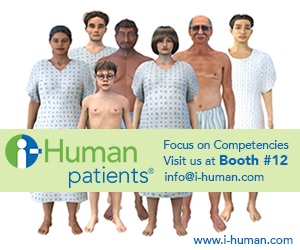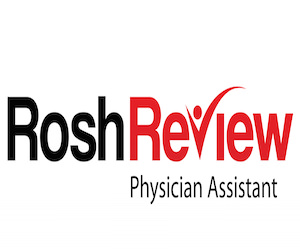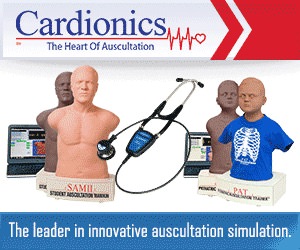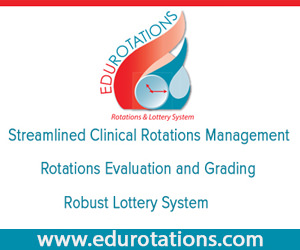Board Candidates
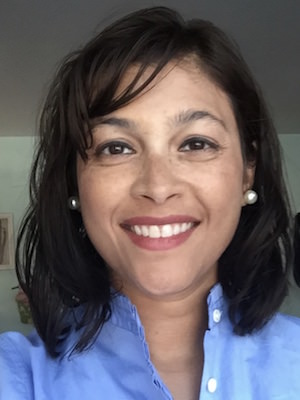
Dipu Patel-Junankar, MPAS, PA-C
Director al Large Platform Statement
I am honored to be a candidate for the position of Director at Large at PAEA. As a practicing provider for 15 years and now an educator, I am proud to see how the PA profession has evolved. My practice in emergency medicine, hematology and oncology, and urgent care has been a rewarding experience. It is the diversity of practice settings and specialties that have allowed me to gain further insight into education and its eccentricities. Since I attained my PA certificate I have seen the profession evolve into a graduate degree program and gain further acceptance within the healthcare landscape.
As I pursue my Doctorate in Education with a focus on Organizational Leadership, I find myself re-dedicating my convictions and beliefs to the profession. The future of our profession is only as strong as the people in whom we entrust it. Our students, represent not only our livelihood today but also our future. I am truly lucky to be have been afforded the opportunity to educate our future leaders, healthcare providers, and change makers. It is not a task I take lightly.
Growth, both personal and professional comes through a continual process of self- reflection and selflessness. I am grateful for those who have led the charge in creating a strong foothold for our profession. In my current Governor-appointed role as Chair of the Massachusetts Board of Registration for Physician Assistants, I have been afforded the opportunity to see our profession in a different light. In addition to making an impact on patient lives, serving on the Board allows me to have a wider impact on physician assistant practice, education, and policy. It is from this, larger perspective, that I have seen advocacy truly make a difference.
I have watched our profession has transform into a highly sought after technical and professional position. This has been accomplished by the efforts of visionaries and leaders, organizations and grass root efforts, and by individuals who have dedicated their lives and careers to making this profession, the best profession-for patients, health systems, and economies.
As I continue to cultivate my knowledge both in clinical practice and academia, I look forward to widen my support structure to benefit the profession through my role as Director at Large.
Responses to Association Questions
- What characterizes a high-performing Board member and which of those attributes do you posses that would provide strong contributions to the PAEA board?
Simply put, serving on the PAEA Board is about the thousands of PAs represented through the mission and vision of the organization. My strengths lie in strategic vision and engagement and team leadership. Leading the Association in new directions requires thinking and seeing the profession from a bird’s eye view. The microcosm of individual programs adds strength to that purpose and defines the path the Association will take. I am a strong believer in bringing our collective experiences together to reshape the healthcare landscape. Effective boards inspire, motivate, and allow the natural growth process to take place both individually and collectively. In order for the work of the Board to be compelling, the goals, mission, and vision have to be aligned with those of the practicing professionals and educators we represent. As Maya Angelou said, “Do the best you can until you know better. Then when you know better, do better.” - If PAEA’s entire budget was represented by $100, what amount of money would you invest in products & services that benefit individual programs (e.g., exams, workshops), and what amount would you invest in initiatives that benefit the field as a whole (e.g., advocacy, legislation)? Please provide rationale for your response.
Much like the advent of penicillin changed the way we practice medicine, so too will (and in many ways already have) the fields of genetics, informatics, and nanotechnology. The medical systems and education of those systems will have to adapt and shift from teaching about the average patient to each, specific patient, from demographics based care to personalized medicine. Therefore, as leaders in the education of future providers and leaders our financial resources should be spent in the development of programs that not only teach those fields but also research within them and advancement of their knowledge. I would divide the budget into reinforcing and researching programs around future trends in healthcare (40%), continual individual programmatic support with a focus on creating a better understanding of our educational process within sponsoring institutions (30%), and increasing faculty development by engaging students at the beginning of their careers (30%). The future of our profession is dependent on our ability to remain competitive in a national and global market, not only our own profession but other professions that will augment our practice in the future. We will need faculty leaders to develop these programs and evolve the profession. This can only be done if we invest in our future. This starts with our students. Fresh faces and ideas will lead to tangible changes for the betterment of our profession and our patients. - What are some of the most important unanswered questions relating to the clinical rotation site shortage that the Board needs to address?
Medicine is a human-driven profession. The challenges surrounding clinical rotations are the same for every clinical profession. The most important questions related to clinical training with regard to site shortage are: How do we, as a profession, strike the right balance between adequate training to develop competency without sacrificing quality? What forces, both external and internal, are we able to harness to successfully mitigate the challenges of training?
I believe, the future of clinical training will evolve toward a more personalized method just as patient care has evolved to an individualized approach. This will shift our clinical training curriculum to a more inter-professional and multi-disciplinary modes. Programs will have to focus efforts on training generalist PAs while keeping in mind both personal and patient traits, such as societal and cultural disparities, technology, and continual transformation of health care delivery systems. I envision the future of a PA student in the clinical rotations to be focused not on specialties but on care of communities. As such, the question is not how do we solve the clinical site shortage but instead, how do we engage our fellow healthcare providers and lead the way to solving this problem so that it benefits not only our profession but all professions. In this way, our patients may benefit from our collective efforts. Realizing the enormity of the task ahead of us requires a concerted and coordinated effort on several fronts: mindful professional growth, genuine interdisciplinary work, and innovation at a policy level.
- What are the three most important emerging trends in health care and health care education that will affect PA education in the coming decade?
Three trends I see that will impact our profession are technology, global healthcare, and PA leadership. They are independent forces that intersect at the program level. Other industries have made the leap and are shaping their professional landscape. We should be doing the same.
The following quotation sums up the largest trend that I think will impact all aspects of healthcare and education:
Over 80% of the world’s technological advances have occurred since 1900, and because technology feeds upon itself it is increasing at rates that defy calculation. There was more information produced in the 30 years between 1965 and 1995 than was produced in the entire 5,000-year period from 3000BC to 1965.
A new era calls for a new approach to thinking about leadership. Leadership skills that were useful to put a man on the moon no longer apply to today’s leadership trajectory. As our profession moves on from its nascent stages, we need to think about how to position ourselves on a global level. Healthcare systems will continue to get more complex and intricate, and as the population lives longer and ages, the burden of leading care and care teams will fall on the next generation of providers. We need to educate our students not for the day they graduate, but for the next 50 years of their practice. We need to teach our students to think beyond our borders and be leaders on the global stage.



